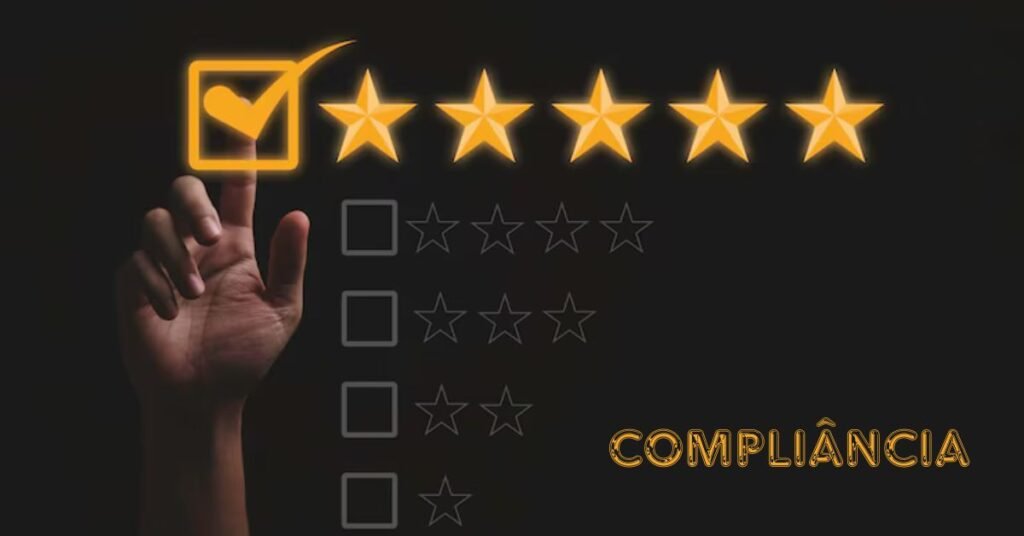Compliância is more than just a buzzword in today’s business world. It represents the commitment of organizations to adhere to laws, regulations, standards, and ethical practices. At its core, compliance is about doing the right thing, even when no one is watching. But why is it so crucial for modern businesses?
Early Examples of Compliância
The concept of compliance isn’t new. Historically, societies have had rules and regulations to maintain order and fairness. Ancient civilizations had codes of conduct and legal systems to ensure that everyone played by the rules.
Evolution Over the Decades
As industries grew and became more complex, so did the need for more structured compliance frameworks. The 20th century saw significant developments in corporate governance and regulatory standards, leading to the sophisticated compliance systems we see today.
Regulatory Compliance
Regulatory compliance involves adhering to laws, regulations, guidelines, and specifications relevant to a business or industry. It’s about meeting the requirements set by governmental bodies to ensure fair practices and consumer protection.
Corporate Compliance
Corporate compliance ensures that a company follows internal policies and procedures, upholding its values and ethical standards. It’s integral to maintaining a company’s integrity and reputation.
Legal Compliance
Legal compliance refers to following all laws that apply to business operations. This includes everything from labor laws to data protection regulations.
Environmental Compliance
Environmental compliance involves adhering to environmental laws and regulations to minimize the negative impact of business operations on the environment.
Health and Safety Compliance
Health and safety compliance ensures that workplaces are safe and healthy for employees. This includes following regulations designed to prevent workplace injuries and illnesses.
Written Policies and Procedures
A solid compliance program starts with clear, written policies and procedures that outline the rules and expectations for employees.
Training and Education
Regular training ensures that employees understand compliance requirements and can apply them in their daily work.
Monitoring and Auditing
Continuous monitoring and regular audits help identify and address compliance issues before they become significant problems.
Reporting Mechanisms
Effective reporting mechanisms allow employees to report compliance concerns without fear of retaliation.
Enforcement and Discipline
A fair and consistent enforcement strategy ensures that compliance policies are taken seriously and followed by everyone.
What is Regulatory Compliance?
Regulatory compliance means following external laws and regulations that apply to business activities. These can vary widely depending on the industry and geographical location.
Examples of Regulatory Bodies
Examples include the Securities and Exchange Commission (SEC) in the United States, the European Medicines Agency (EMA) in the EU, and the Environmental Protection Agency (EPA).
Importance of Regulatory Compliance
Adhering to regulatory compliance prevents legal penalties, protects a company’s reputation, and ensures long-term sustainability.
Definition and Scope
Corporate compliance encompasses a company’s adherence to its own internal policies and procedures, ethical standards, and legal obligations.
Role in Corporate Governance
It plays a critical role in corporate governance by promoting transparency, accountability, and ethical behavior within the organization.
Benefits of Corporate Compliance
Corporate compliance helps prevent fraud, improves operational efficiency, and enhances a company’s reputation.
Understanding Legal compliância
Legal compliance involves understanding and following all laws relevant to business operations, from employment laws to data protection regulations.
Common Legal Requirements for Businesses
Common requirements include maintaining accurate financial records, adhering to employment laws, and protecting customer data.
Consequences of Non-Compliance
Failure to comply with legal requirements can result in fines, legal actions, and damage to a company’s reputation.
What is Environmental Compliance?
Environmental compliance refers to adhering to environmental laws and regulations to minimize harm to the environment.
Key Environmental Regulations
Key regulations may include laws on waste management, emissions, and use of natural resources.
Benefits of Environmental Compliance
Beyond avoiding legal penalties, environmental compliance can enhance a company’s reputation and lead to cost savings through efficient resource use.
Importance of Health and Safety Compliance
Ensuring compliance with health and safety regulations protects employees from workplace hazards and promotes their well-being.
Common Health and Safety Regulations
These include regulations on workplace safety standards, proper use of equipment, and emergency procedures.
Impact on Employee Well-being
A safe work environment boosts employee morale and productivity while reducing absenteeism and turnover.
Steps to Develop a Compliance Program
Assess Risks: Identify areas where the company is most vulnerable.
Establish Policies: Develop clear, concise policies and procedures.
Train Employees: Provide regular training to ensure everyone understands their responsibilities.
Monitor and Audit: Continuously monitor compliance and conduct regular audits.
Enforce Policies: Apply policies consistently and fairly.
Involving Key Stakeholders
Engage stakeholders at all levels, from top management to front-line employees, to ensure the program’s success.
Measuring Success
Track key metrics such as the number of compliance incidents, results of audits, and employee feedback to measure the program’s effectiveness.
Common Obstacles
Common challenges include keeping up with changing regulations, managing complex compliance requirements, and ensuring employee adherence.
How to Overcome Compliance Challenges
To overcome these challenges, businesses can invest in training, leverage technology for better tracking, and foster a culture of compliance.
Compliance Management Software
Compliance management software helps streamline processes, making it easier to manage and track compliance activities.
Automation and Efficiency
Automation can reduce the burden of manual compliance tasks, allowing for more efficient and accurate compliance management.
Successful Compliance Programs
Companies with robust compliance programs often see fewer legal issues, better employee morale, and improved financial performance.
Lessons Learned from Compliance Failures
Failures in compliance can lead to significant financial losses and damage to reputation. Learning from these failures helps other companies avoid similar pitfalls.
Emerging Regulations
New regulations are continuously emerging, particularly in areas like data privacy, environmental protection, and corporate governance.
The Impact of Globalization
Globalization means companies must navigate a complex web of international regulations, making compliance more challenging but also more critical.
Conclusion
compliância is a multifaceted and ever-evolving field that touches every aspect of a business. From regulatory and legal compliance to health and safety and environmental standards, adherence to these rules is crucial for any organization’s success. A robust compliance program not only protects a company from legal penalties but also enhances its reputation, operational efficiency, and long-term sustainability.
FAQs
What are the key benefits of compliance for businesses?
Compliance helps avoid legal penalties, enhances reputation, improves operational efficiency, and promotes a positive corporate culture.
How often should compliância training be conducted?
Compliance training should be conducted at least annually and whenever there are significant changes in regulations or internal policies.
What are the most common compliance violations?
Common violations include data breaches, environmental regulation breaches, and non-adherence to health and safety standards.
How can small businesses manage compliance effectively?
Small businesses can manage compliance by staying informed about relevant regulations, implementing clear policies, and using compliance management software.
What role does leadership play in ensuring compliância?
Leadership plays a crucial role by setting the tone for compliance, providing necessary resources, and ensuring that compliance is integrated into the company’s culture.







